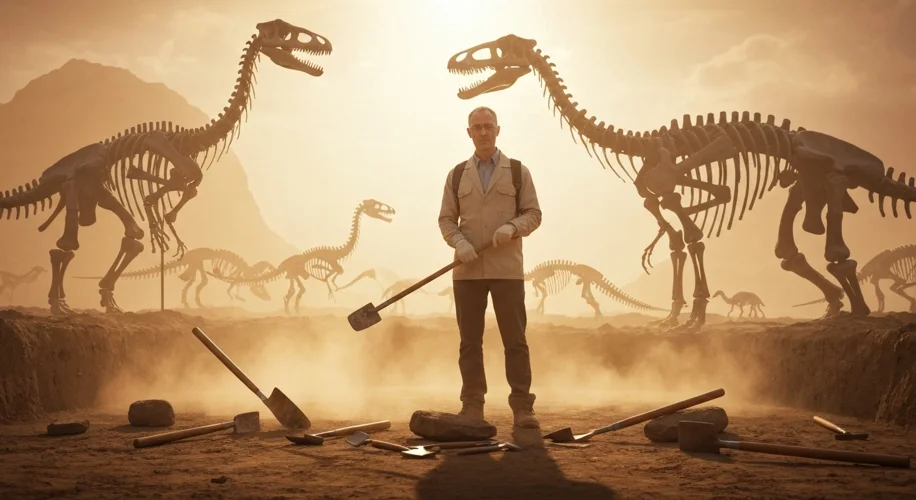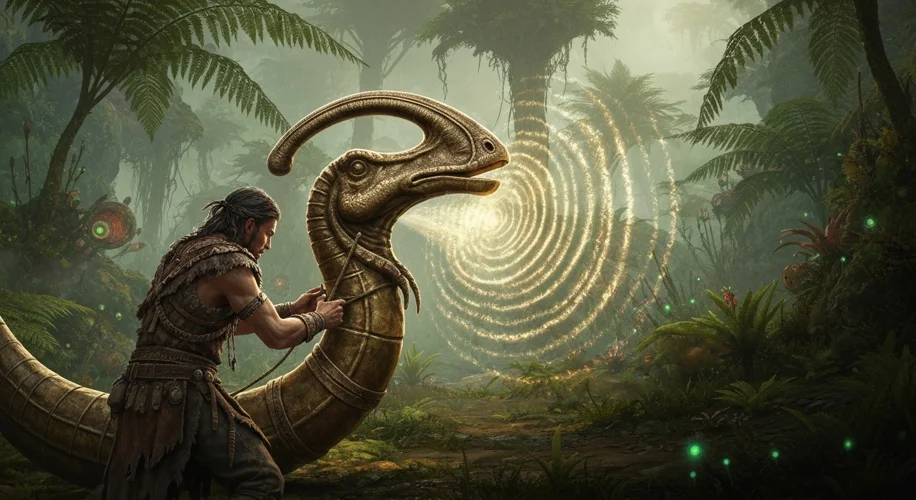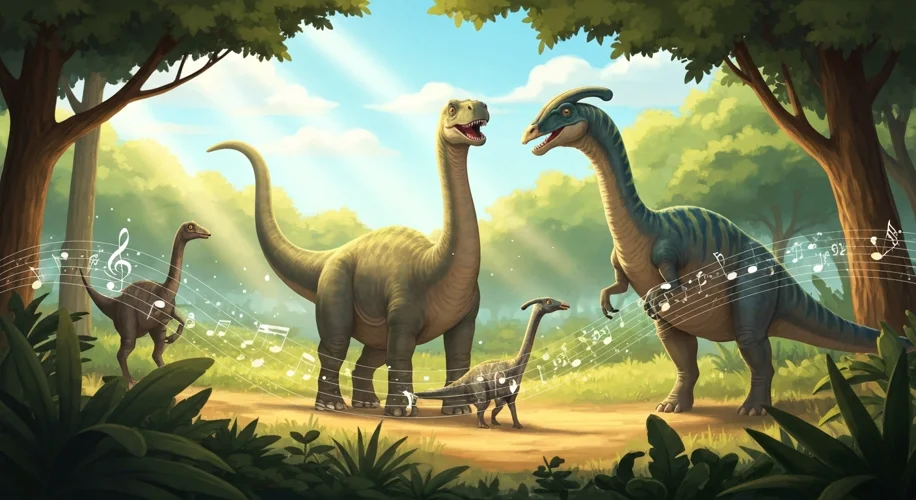Imagine a world not of hushed museums and dusty fossils, but of thunderous bellows, guttural roars, and piercing shrieks that shook the very earth. For millennia, the reign of dinosaurs was a symphony of colossal life, a soundscape utterly alien to our modern ears. But what if we could hear them? What if we could reconstruct the very voices of these magnificent, extinct creatures?
For centuries, the silent giants of prehistory existed only in our imagination, pieced together from the scattered remnants of their bones. Paleontologists meticulously excavated femurs longer than a man, skulls like colossal cannons, and vertebrae that hinted at immense vertebral columns. Yet, the question of their sound remained a tantalizing mystery, locked away in the fossilized silence.

The breakthrough began not in a concert hall, but in the quiet intensity of a laboratory. Scientists realized that the very structure of a dinosaur’s anatomy held clues to its vocal capabilities. The size and shape of the skull, the presence and configuration of nasal passages, and the structure of the hyoid bone (which supports the tongue) all play crucial roles in sound production in modern animals. For instance, the massive skulls of sauropods like Brachiosaurus suggested large resonating chambers, potentially capable of producing very low-frequency sounds, infrasound, that humans cannot even perceive – sounds that could travel for miles.
The discovery of specialized bony structures within the skulls of certain dinosaurs, such as the large, hollow cavities seen in hadrosaurs (duck-billed dinosaurs), proved particularly illuminating. These structures, analogous to the inflatable cheek pouches of some modern birds, or the complex nasal passages of elephants, suggested sophisticated vocal abilities. Musicians and paleontologists collaborated, using these anatomical insights to design and build specialized instruments.
Consider the Parasaurolophus. This iconic hadrosaur sported a long, hollow crest extending from its skull. Early theories proposed it was for display, but further analysis revealed it was likely a complex resonating tube. By studying its fossilized structure and comparing it to the vocal tracts of living animals, scientists and musicians were able to hypothesize and then construct instruments that mimicked this structure. Imagine a massive, curved horn, crafted from materials that could replicate the density and resonance of bone, connected to a bellows system. When air is pushed through, it produces a deep, resonant honk, a sound that might have echoed across Cretaceous plains.

Other dinosaurs presented different sonic puzzles. Tyrannosaurus Rex, with its massive jaw and powerful build, might have possessed a deep, rumbling roar. Researchers have studied the possibility of a ‘closed-mouth roar,’ similar to that of modern big cats, using their vocal cords to create a low-frequency vibration rather than an open-mouthed bellow. The sonic landscape of the Mesozoic Era was likely incredibly diverse. Small theropods, perhaps with bird-like lungs and syrinxes, could have produced high-pitched chirps or whistles, while the larger herbivores might have communicated with booming calls or seismic vibrations felt through the ground.
The process is far from simple guesswork. It involves complex biomechanical modeling, comparative anatomy, and a deep understanding of acoustics. Each fossil is a unique data point, contributing to a more nuanced understanding of these ancient soundmakers. The challenge lies in bridging the immense gap of time and biology, translating inert bone into a vibrant sound.
The impact of this auditory reconstruction is profound. It moves dinosaurs from the realm of static relics to living, breathing beings. Suddenly, the fossils are not just shapes of bone, but the very structures that produced the sounds of a lost world. It offers an immersive experience, allowing us to connect with these creatures on a more visceral level. The low-frequency hum of a sauropod, the trumpeting call of a hadrosaur – these sounds, once lost to time, are now echoing again, thanks to the ingenuity of science and the artistry of music.
The quest to hear the dinosaurs is more than just a scientific endeavor; it’s an act of historical imagination, a way of resurrecting the planet’s most iconic inhabitants. It’s a testament to our enduring fascination with these ancient giants, a desire to truly understand the world they inhabited, one resonant note at a time.

